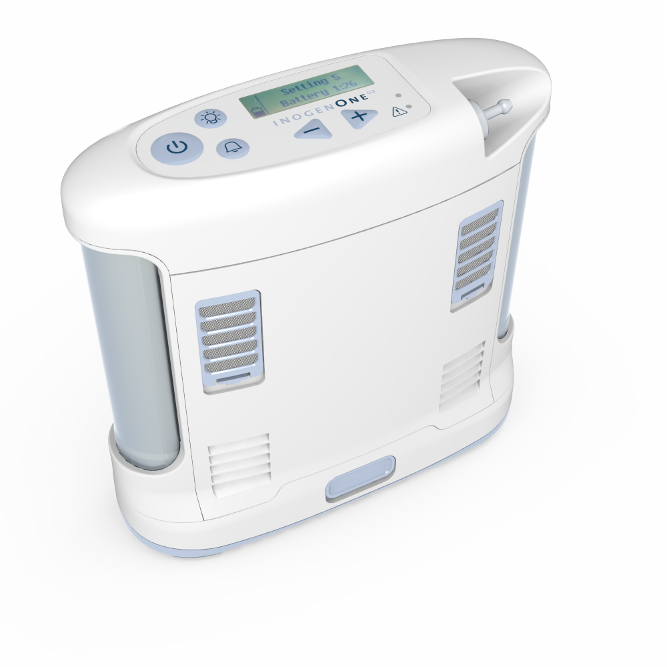Are you wondering what those small shoulder bag oxygen things are, and how to get one?
Well, you’re in the right place!
Before we begin though, it’s very important to understand that everyone tolerates oxygen therapy differently. For reasons that we’ll outline below, not all oxygen systems are the same. We’re going to explain the differences and help you choose the best equipment for you. If you’re not inclined to read through the details, just give us a call, and we’ll walk you through it.
Let’s start at the beginning
When your doctor prescribed oxygen, a supplier likely delivered an oxygen concentrator to your home along with one or more compressed gas cylinders. The oxygen concentrator plugs into the wall. It uses a compressor to pump air through a system that separates oxygen from nitrogen, and other gases. You receive the ‘concentrated’ oxygen at a continuous flow rate that is prescribed by your doctor.
This flow rate is measured in liters per minute (LPM) and may (or may not) differ when you’re using your portable oxygen tanks. Those tanks contain compressed oxygen and must are by your supplier. The challenge most oxygen users face is that the cylinders are bulky, they don’t last very long, and you must wait for the supplier to bring more.

A night out
You don’t need to worry about running out of oxygen with a portable oxygen concentrator
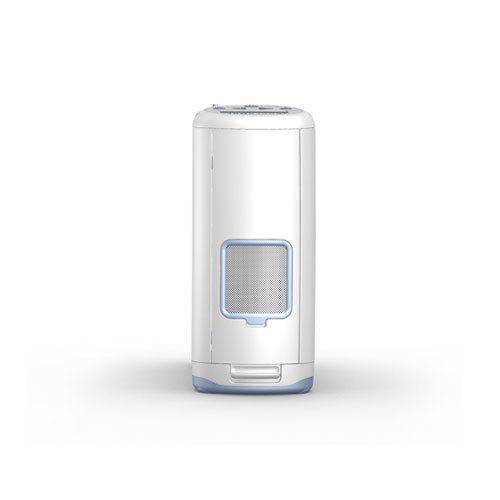
The Portable Oxygen Concentrator
Ok, now let’s talk about those little shoulder bag thingies.
The Portable Oxygen Concentrator (sometimes called a P.O.C) works similarly to your home oxygen system. It takes in air, separates the oxygen, then delivers it to you. The difference is that they’re much smaller, are battery operated, and can go anywhere. There is a tradeoff between making the oxygen concentrator smaller while keeping it effective. The amount of oxygen that it can produce per minute is limited. So, the engineers solved this problem by introducing a concept called “pulse-dose” delivery.
Pulse-Dose Vs. Continuous Flow
Your home oxygen concentrator and some portables concentrators deliver a continuous flow of oxygen to you. So, even while you’re exhaling oxygen is being delivered.
Pulse dose delivery is different. There is a very sensitive micro switch that is triggered by your breath. When you inhale the system releases a precisely measured puff of oxygen. When you exhale, the micro-switch stops the flow of oxygen. The difference allows a much smaller device to ‘make’ enough oxygen to meet the user’s needs. While all portable oxygen concentrators have a pulse dose mode, and some can also provide continuous flow.
There are portable concentrators that can produce a continuous flow of oxygen AND have pulse dose capability. These hybrid concentrators typically can generate one to three liters per minute (1-3LPM) of oxygen continuously and up to six liters on a pulse dose mode. These devices are a bit larger than the smallest of portables.
Ok, so what do I need? Here’s how we figure that out.
Titration
When you received your oxygen therapy equipment, a clinician likely used a pulse oximeter to measure the amount of oxygen in your blood (it’s the little finger thingy that shows a percentage). The amount of oxygen delivered to you would be adjusted up or down to find the least amount needed for you to have a normal result.
While most people that require oxygen therapy are good candidates for a small portable oxygen concentrator, some are not. The best way to tell is for a clinician to monitor you while you’re using the device. We do this for every system we sell and can do it remotely with you by telephone.
If the therapist discovers a problem, we may be able to change the equipment settings (with your doctor’s approval). We can also try different devices.
The different types of oxygen concentrators
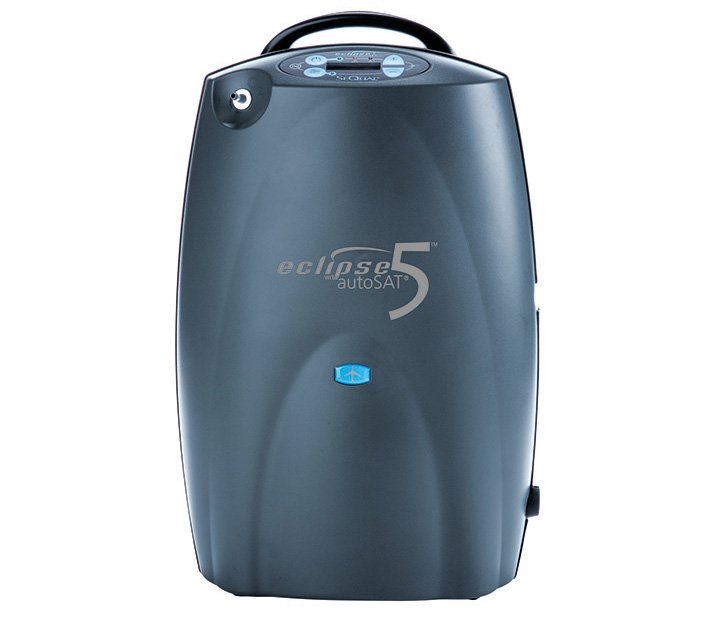
Stationary Concentrator
This is the type of device that your oxygen supplier would have left you for home use. It plugs into the wall and provides a continuous flow of oxygen. It is not portable and requires an AC power source to operate.
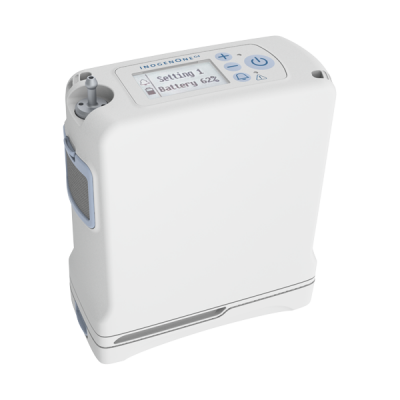
Small Portable Oxygen Concentrators
The small, shoulder style, portable oxygen concentrators provide a pulse dose of oxygen. They are battery or AC powered and can charge in your car. Some models weigh as little as 2.6 lbs.
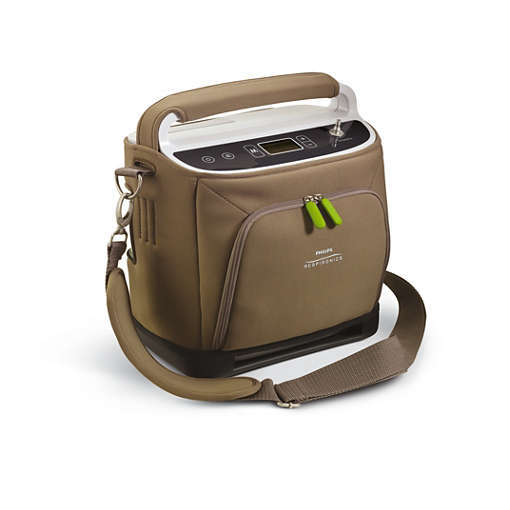
Hybrid Portable Concentrators
These portable oxygen systems are a bit larger than the shoulder style but smaller than home concentrators. They run on battery power as well as AC. The main difference is that they can provide a continuous flow of oxygen. The typical continuous flow of these devices is 1-2, or 1-3 liters per minute. Also, they’ll provide up to six liters per minute on a pulse dose mode.
Understanding Liters Per Minute and Portable Oxygen
(How your prescription is written)
Oxygen is a drug and prescribed by your physician. When he or she orders oxygen, they will specify an amount of oxygen per minute measured in liters per minute (or LPM). You may have a single LPM order, or it may differ based on your activity. For example, you may need less oxygen while resting than you do while walking. A continuous flow oxygen concentrator can easily accommodate prescriptions of up to five liters per minute (5 LPM).
Portable oxygen concentrators with pulse dose delivery are different. Instead of a continuous flow of oxygen, they deliver gentle puffs that are triggered by your breath. The oxygen delivered by these devices is selected using a setting that is its LPM equivalent. However, variations can apply based on the device and your breaths per minute.
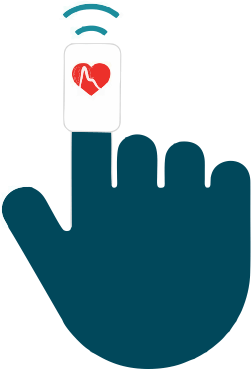
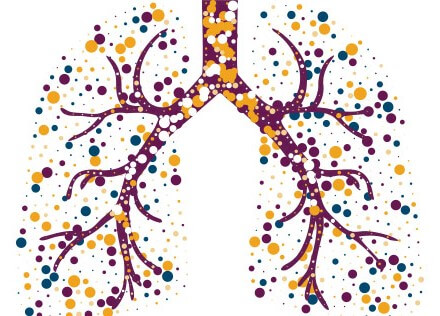
Breaths per Minute
You inhale and exhale a varying number of times per minute. The quantity of breaths changes based on activity and heart rate. This means that your oxygen needs will fluctuate as your activity level changes.
When you’re using supplemental oxygen, it needs to be able to keep up with these changes. An oxygen concentrator is capable of producing a fixed amount of oxygen per minute (called its ‘minute volume’). This volume of oxygen is then divided up by your breaths per minute. So long as your oxygen needs remain below what the concentrator is providing all is well. If, however, you’re demanding more oxygen than the device can provide you’ll have a problem.
The whole idea of a portable oxygen concentrator is to allow you to be more active. So, the concentrator that you use needs to produce an adequate amount of oxygen, per minute, based on your needs. The concentrators we sell are specifically chosen based on their size, weight, minute volume, and battery life.
